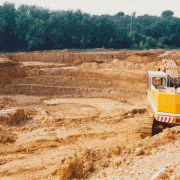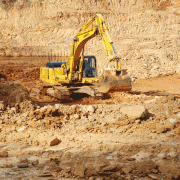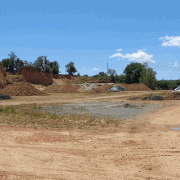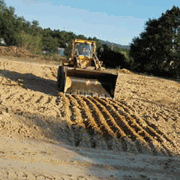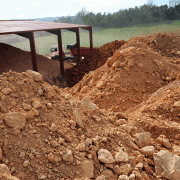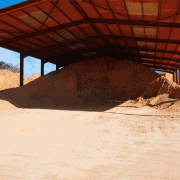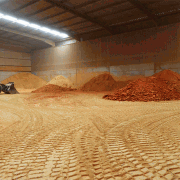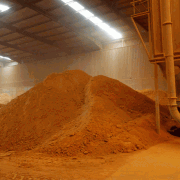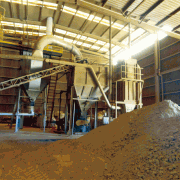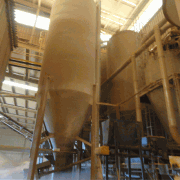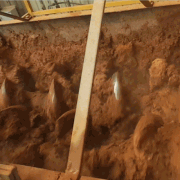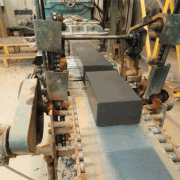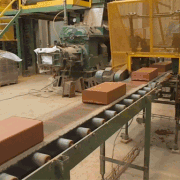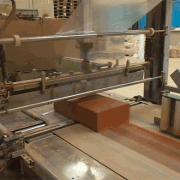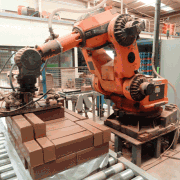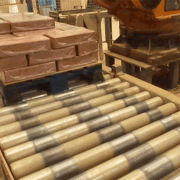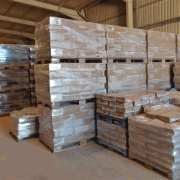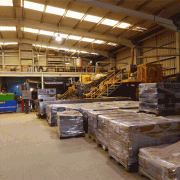CLAY (0) Making clay
ca: ARGILA (0) Fabricació d' Argila
es: ARCILLA (0) Fabricación de Arcilla
 These photos were taken in the clay factory of Argiles Bisbal located in l’Empordà (Girona-Spain). The factory goes through the whole process manufacturing clay, most of the earths they use to produce the different types of clays are all found in the ground that surrounds their factory.
These photos were taken in the clay factory of Argiles Bisbal located in l’Empordà (Girona-Spain). The factory goes through the whole process manufacturing clay, most of the earths they use to produce the different types of clays are all found in the ground that surrounds their factory.
Clay has many properties, plasticity, shrinkage during drying and firing, texture the color before and after firing, hardness, it can be molded to form a shape that it retains while drying, when dry it loses its plasticity but the piece can be dampened, so the shape can be altered.
When the clay is dry it is hard and un-pliable, in this state it can be fired to become bisque. Bisque is the name used to define all types of clays that have been fired to become a ceramic. This chemically changes, turns it into a permanent shape, which cannot be altered or integrated with water but water can still pass through it
THE PROCESS OF MAKING CLAY
It starts in a quarry, they work with an earth digging tractor to extract different types of clay from the ground. This can be seen in the photos (a, b & c). The different types of clays are separated into big piles; that vary in particle sizes, shapes and colors and are placed round a large, flat, dry earth surface, where each one is spread out to dry in the sun. (d)
Each pile of is laid out on the ground and combed with a tractor; it turns and separates it into thin lines, which increases the speed of drying. (e) The drying will depend on the category of the clay, the heat and time required to bring out its maximum benefit. The moisture of freshly mined clay is 18% and after drying it ranges from 9% to 11%. (f & g) When dry they are again piled up, covered and left for 3-12 months to age
When dry the clays are moved inside a big nave (h). The piles are placed near the mill that will grind the clay so it is formed as a powder (100 micras) (i). The large ball mills, grind the earth until it has the consistency of a fine powder, the powder then passes through to separate any unwanted bodies (j). The soils milled to form the clay as a powder. It is stored in large silos, (k) to mix with feldspar, manganese, and grog..
This process has to be an exact (%) of the formulation of the minerals that are added and they are automatically weighed before being mixed with it.
Adding water is the first step of turning the rough clay into a pliable product. The right humidity for each type of clay is different and the exact amount of water must be determined correctly for each one. The process of adding water to dry clay can be seen in (l). After mixing all minerals and water with kneading machine/mixer, the product becomes a a smooth slip. (m).
Metallic machine/ roller use: 17% humidity.
Plaster cast: 19% humidity, medium plastic clay
For throwing: 22%-25% humidity, very plastic clay
The last stage is to pass it through a de-airing extruder also known as a plug mill, it has a vacuum and sucks the air out of the clay.
A nozzle (square rectangular or cylindrical) seat at the pug mill head, the clay passes through and that forms it into a long continues rectangular shape, moved on to a conveyor belt that cuts it in to sections the correct size in centimeters and weight. (o & p). The clay in photo (o) is black refractory clay.
The machine continues, packing and sealing the cubes in strong transparent plastic paper that keeps the clay at the correct moisture need to work with (q). They are lifted up with a machine, known as a palletize (r) and placed on a pallet (s). Standard pallet has 96 blocks of 12.5Kg, total 1200 Kg. Then the whole block, the four sides, the top and the outer edge of the pallet are packed in very strong plastic paper, this holds them together so they can be mover as one body. (t, u & v)
Note: The processes of preparing clay, is the same for all the different types made by this firm. As they are all prepared using the same machinery great care is taken not to mix them and perfect cleaning after every different clay production It is very important that what a client buys, has the same standard as the previous acquisition
